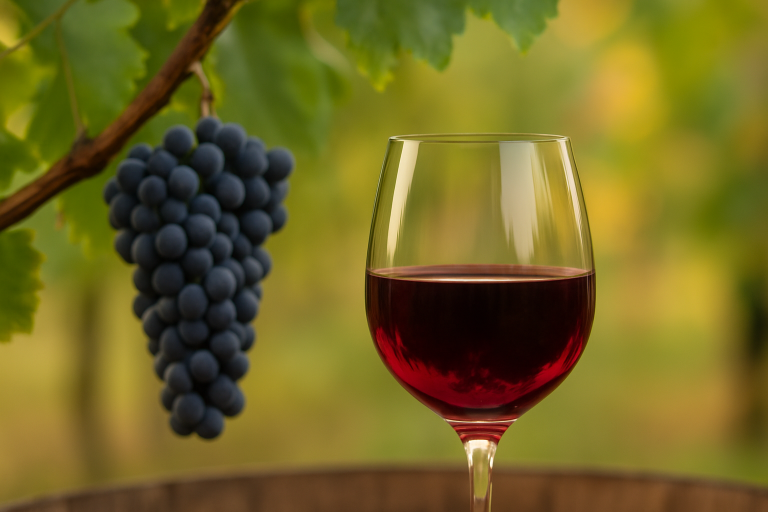Dark, dense, and full of character, Tannat is one of the most robust red wines in the world — a grape celebrated for its power, structure, and depth. Once known as France’s most tannic red, Tannat has evolved into a modern classic, now producing wines that balance intensity with elegance. It’s a grape that thrives in adversity, a true testament to resilience and craftsmanship.
A Brief History
Tannat’s roots stretch back to the Madiran region of southwest France, near the Pyrenees Mountains. The name itself comes from “tannin,” an apt description for a grape renowned for its firm, gripping structure. Historically, Tannat was cultivated by farmers who appreciated its durability and ability to age gracefully.
For centuries, Tannat wines from Madiran AOC were known for their dark color, full body, and astringent tannins — wines that demanded years of cellaring before becoming drinkable. Over time, winemakers refined their methods, incorporating modern techniques like micro-oxygenation to soften tannins and create more approachable, velvety versions of this once-rugged varietal.
In the late 19th century, Basque immigrants brought Tannat to Uruguay, where it found a new home and identity. The grape thrived in Uruguay’s sunny climate and oceanic breezes, developing softer tannins and ripe fruit flavors. Today, Uruguay proudly claims Tannat as its national grape, producing wines that rival the finest from France — rich, balanced, and uniquely expressive.
Where It’s Grown
- France (Madiran): Produces traditional, deeply structured wines with firm tannins, dark fruit, and earthy minerality. Modern Madiran styles are refined and age-worthy.
- Uruguay: The new home of Tannat, known for softer, fruit-forward wines with lush blackberry, plum, and cocoa notes. Regions like Canelones and Maldonado lead production.
- Argentina & Chile: Growing in popularity, offering riper, smoother expressions influenced by warm, sunny climates.
- United States: Particularly in California and Virginia, where small plantings produce concentrated wines with a balance of fruit and spice.
- Australia & South Africa: Emerging regions crafting modern, approachable Tannat with juicy fruit and gentle oak influence.
Wherever it grows, Tannat remains faithful to its origins — bold, expressive, and built to last.
Tasting Notes
Tannat is typically full-bodied with high tannins and vibrant acidity. It boasts a deep, almost opaque color and an aroma bursting with blackberry, plum, and blueberry, often joined by leather, smoke, and dark chocolate. Oak aging enhances complexity, introducing vanilla, tobacco, and spice.
On the palate, Tannat is rich and structured, offering layers of fruit and earthy undertones. Young Tannat can be bold and powerful, while aged versions become smoother and more elegant, revealing notes of espresso, cedar, and dried herbs.
This is a wine built for pairing — best enjoyed with grilled steak, lamb, game meats, or rich stews, and equally at home alongside aged cheeses or barbecue.
Serve around 60–65°F, and consider decanting to soften the tannins and release its aromatic depth.
The Essence of Tannat
Tannat is a wine of strength and spirit — a perfect reflection of the rugged landscapes where it grows. From the foothills of France to the coastal hills of Uruguay, it embodies balance between tradition and innovation.
Once known for its ferocity, modern Tannat has evolved into a bold yet refined red, offering both power and poise. Each glass tells a story of transformation — from rustic beginnings to international acclaim — making Tannat one of the world’s most fascinating and rewarding wines.







